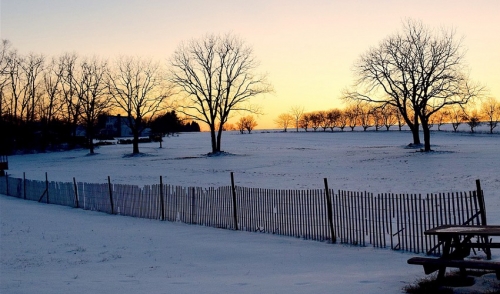
Snow Fence Installation Tips
As winter arrives with its heavy drifts and winds, you may find yourself wanting to install a more significant substitute for your constant plowing, snow blowing and shoveling. Snow fences are typically used to re-direct drifting snow and force it to accumulate elsewhere. Traditionally, these are larger scale projects used to prevent accumulation on roadways, but snow fencing has also been employed by ski mountains (to control avalanche risks and to construct terrain parks) and by farmers (to direct snow to basins where it will melt for a spring water supply). In short, snow fencing is used to make drifts, not eradicate them.
To begin constructing your snow fence, first take note of the prevalent wind direction during winter—this is crucial to observe as you will want to lay your boards or tarp so that the wind pushes them against the stakes to prevent breakage. If you are trying to prevent drifting along a roadway, it is best to run your fencing parallel to the road, though, again, it is of top priority that your fences are placed perpendicular to the wind.
You will want to place the fence far enough away from your intended drift area to give the snow some time to settle. For example, if you are looking to redirect snow away from a roadway, you will need to place your fencing far enough away, depending on the general strength of the winds and the height of your fence. We find a good rule of thumb is to multiply the height of your fence by about twenty to thirty to determine the distance a fence should be placed from the target drift area. While the height of your fence can vary, you should note that the taller the fence, the further away your snowdrift will form from the back of the fence. Additionally, if winds are stronger against your fence, you can expect a higher snow pile.
Take the time to experiment with the placement of your snow fences, and let these placements inspire you to think outside of the box! A snow fence might generate enough snow to build a small pond to change up your landscaping, or it might just become the neighborhood’s best snow fort this winter!

